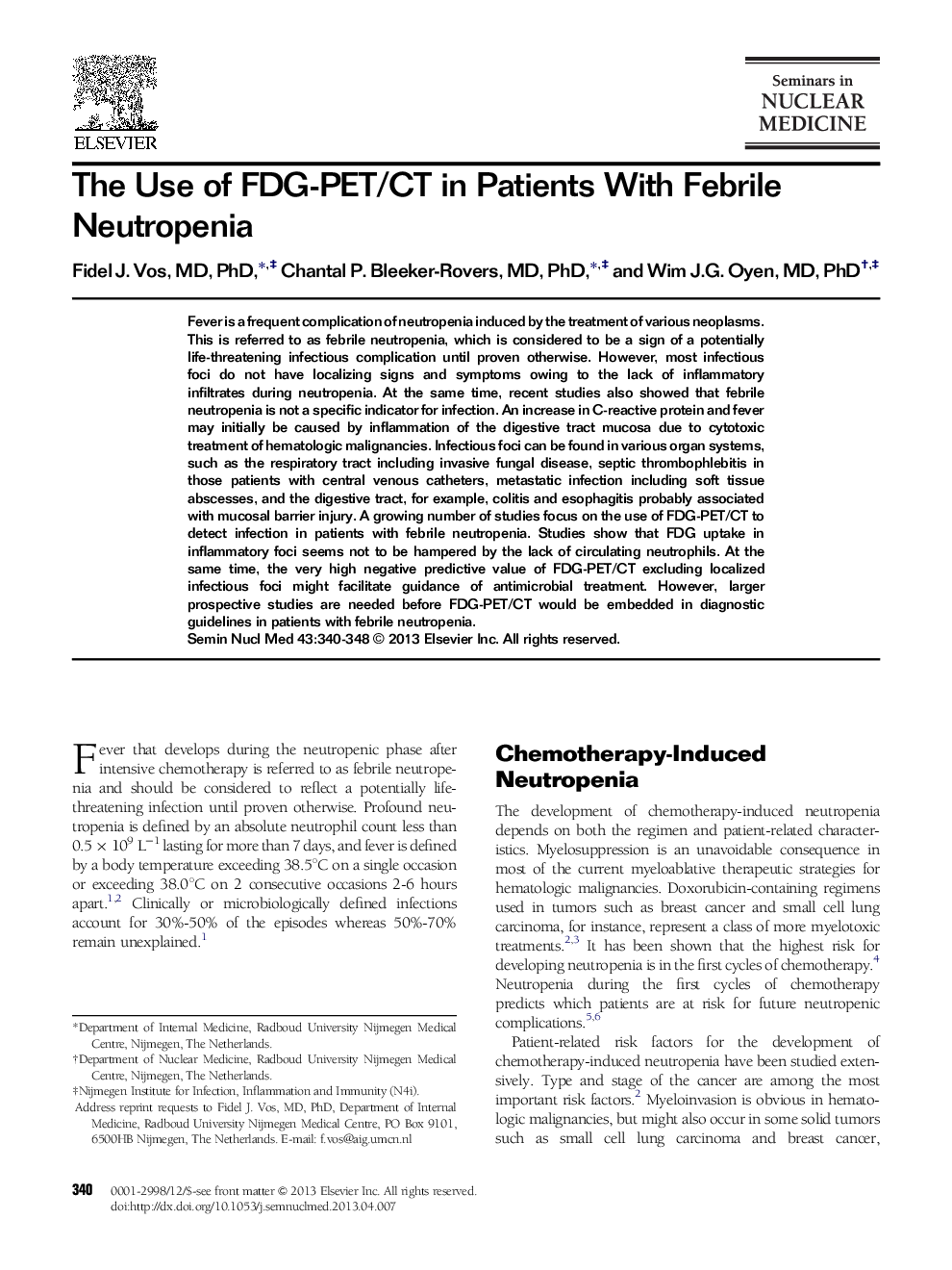| Article ID | Journal | Published Year | Pages | File Type |
|---|---|---|---|---|
| 4251003 | Seminars in Nuclear Medicine | 2013 | 9 Pages |
Fever is a frequent complication of neutropenia induced by the treatment of various neoplasms. This is referred to as febrile neutropenia, which is considered to be a sign of a potentially life-threatening infectious complication until proven otherwise. However, most infectious foci do not have localizing signs and symptoms owing to the lack of inflammatory infiltrates during neutropenia. At the same time, recent studies also showed that febrile neutropenia is not a specific indicator for infection. An increase in C-reactive protein and fever may initially be caused by inflammation of the digestive tract mucosa due to cytotoxic treatment of hematologic malignancies. Infectious foci can be found in various organ systems, such as the respiratory tract including invasive fungal disease, septic thrombophlebitis in those patients with central venous catheters, metastatic infection including soft tissue abscesses, and the digestive tract, for example, colitis and esophagitis probably associated with mucosal barrier injury. A growing number of studies focus on the use of FDG-PET/CT to detect infection in patients with febrile neutropenia. Studies show that FDG uptake in inflammatory foci seems not to be hampered by the lack of circulating neutrophils. At the same time, the very high negative predictive value of FDG-PET/CT excluding localized infectious foci might facilitate guidance of antimicrobial treatment. However, larger prospective studies are needed before FDG-PET/CT would be embedded in diagnostic guidelines in patients with febrile neutropenia.
